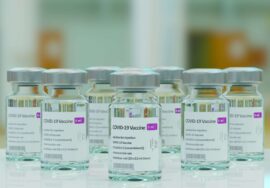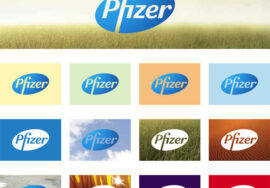
Facebook Marketing: Any Role in Healthcare?
It has now been nearly a year since Facebook’s initial public offering valued the company at $104billion, and ever since the market has being trying to decide whether that figure was wise or wishful thinking.From an IPO high of $38, the company’s share price has dipped as low as $18 in September, before climbing back to $32 in January of this year. Proponents of social media advertising point to the unprecedented segmentation and reach offered by the medium. Others (most notably Martin Sorrel, chief executive of the world’s largest advertising group whose company spent nearly $0.5billion on Facebook in 2012) worry about commercialising an essentially social, personal medium.
Facebook themselves used to shy away from commercialising the platform, but all of that must now change as investors watch carefully to see how future revenue and profits will be generated.
Advertising revenues climbed 35% from $3.2billion in 2011 to $4.3billion last year, although significant investment in R&D seriously dented profitability: during the course of 2012 Facebook have been constantly adding to and tweaking their advertising model so that there are now a bewildering array of options for marketers and media buyers wishing to target the billion plus users Facebook can now boast. Some of the options available to advertisers are outlined below.
For many companies wanting to promote their products and services on Facebook, the first step is to set up a Facebook ‘page’. The user can create a ‘local business or place’ page, a ‘company, organisation or institution’ page or a ‘brand/product’ page. Facebook advertising spend is then often centred around: a) getting more people to “like” your page and b) ensuring that up-dates / posts to the page are seen by those following you.
As 31,491,560* people in the UK are very well aware, Facebook ‘life’ centres around the News Feed. As well as a stream of consciousness from your friends, the news feed also contains up-dates from various pages that you have liked. But have you ever wondered how Facebook decides which posts to display on your news feed and in what order? Facebook uses an algorithm called “Edge Rank” to determine this. Put very simply, the more you interact with a friend’s or page’s posts, the higher the Edge Rank they will be assigned and the more likely you will be to see future posts. For the administrators of commercial company and brand pages this means that the quality of posts is as important as quantity. Ensuring fans engage with your content should be one of the key objectives, that way Edge Rank will be improved and followers are more likely to see future posts. Facebook’s own recommendations in this area include:
- Make sure your posts are relevant to your audience and business
- Be succinct, friendly and conversational
- Share photos and videos because they tend to be more engaging
- Ask questions or seek input
- Give access to exclusive information and specials
- Be timely by posting about current events, holidays or news
There are also a variety of ways to buy your way into users’ News Feed:
Promoted Posts
Marketers can now pay Facebook to improve the visibility of their posts on fans’ News Feed via ‘promoted posts’. Promoting a post doesn’t change who can see it (current estimates suggest that around 15% of fans will see a page post). Promoting moves the post higher in News Feed so the people you shared it with are likely to see it.
Sponsored Stories
If you want to increase your number of followers, you can pay Facebook to ensure that any engagement with your page by followers is highlighted to their friends
Page Post Ads
You can also just pay to advertise your post in the News Feed of a targeted group of Facebook users, regardless of whether they are fans or friends of fans
News Feed ads are becoming increasingly common, partly because it is where most users’ attention is focused, but also because of mobile. Increasing numbers of people are accessing their Facebook accounts primarily from phone and tablet APPs and this has put the pressure on Facebook to ‘monetise mobile’. The limited space available on mobiles means that News Feed ads are the principal option for mobile advertising.
Outside of the News Feed, the other option for promoting through Facebook is a sidebar Display Advertisement, which appears down the right-hand side of the desktop version. These are the more traditional Facebook ads that users have been seeing for some time. When setting up a display ad, marketers first decide whether to promote a Facebook page (where the goal is generally to get more page likes) or an external website. Ads can then be targeted at Facebook users according to a number of parameters, including:
- Location by country or city
- Age
- Gender
- Interests
- Relationship status
- Education
- Languages
- Interests and connections
Advertisers set a daily budget then choose to pay either by number of impressions (‘showings’) of the ad (CPM or cost per thousand impressions) or according to the number of clicks on the ad (CPM or cost per click). CPM is the default setting and is intended for advertisers who want people to take actions on Facebook Eg generate more page likes. CPM can be selected if the goal is to generate traffic to an external website.
In September of last year, Facebook allowed advertisers to target display ads in a different way, with the launch of Facebook Exchange (FBX). Instead of targeting display ads according to the profile of a Facebook user as outlined above, targeting can be related to the user’s recent browsing history. Regular internet users may already be familiar with being served up ads on sites like yahoo that relate to other sites recently visited. This so called “re-targeting’ is enabled by a third party ad exchange company placing a cookie on user’s computer when they visit the advertiser’s website. Facebook display ads targeted in this way need to be bought through one of 16 ad exchange companies that Facebook has partnered with. Some commentators have criticised FBX as missing the point of Facebook: FBX advertising makes no use whatsoever of Facebook’s self-proclaimed unique selling point for marketers: “engage with 800million monthly active users or subsets of our users based on information they have chosen to share with us such as age, location, gender or interests”
ABPI & Facebook
As a UK-based ethical pharma marketer you may, of course, be reading all of this and wondering how it could possibly be of any use to you as a promotional tool: for the ABPI-bound, and in the context of product and brand advertising, then probably very little. Code of Practice makes various references to internet promotion (including Clause 24) and, in addition, at the end of 2011 PMCPA issued informal guidance on digital communications1, including use of social media. Together, this advice is helpful, if not exhaustive, and certainly provides more direction than is currently offered by the FDA to US marketers (see below). It seems fairly clear that ABPI would prohibit any form of UK prescription drug Facebook advertising using the various options outlined above. Anything targeting, or potentially viewed by, a patient is clearly out of the question and, although sidebar ads can be specifically targeted, there is no way to ensure they are only viewed by UK doctors.
Outside of product communication, UK pharmaceutical companies can consider establishing a presence on Facebook for disease awareness and other patient support programmes, but a lot of thought needs to go into the moderation of such groups/pages. One of the highest profile initiatives of the last few years (Janssen’s “Psorisis 360” campaign’s Facebook page) was recently closed down due to the extent to which it needed moderating. Companies need to consider how they will report adverse events and product complaints generated on the site (the ABPI have released specific guidance notes for social media on this2) as well as managing abusive and detrimental comments and mentions of prescription drugs.
Of course many doctor-facing marketers are not bound by ABPI and some are experimenting with promotion via Facebook.
FDA & Facebook
In the US, where ‘direct to consumer’ (DTC) is part of the pharma marketing landscape, you might imagine Facebook to be awash with drug ads, product pages and the invasion of users’ News Feed; not so! As was highlighted in a 2010 article appearing in the New England Journal of Medicine entitled “Pharmaceutical Marketing and the New Social Media”, pharma has a history of awaiting explicit guidance from the FDA on the use of particular media before investing heavily. Guidance on DTC advertising released in the mid-80s and mid-90s for print and broadcast media respectively resulted in a subsequent mushrooming in corresponding ad spend. The industry continues to wait for the publication of long-promised FDA guidelines on the use of social media and, if that ever happens, all might change. In the meantime, various controversial issues continue to deter US-based pharma marketers from really committing significant budget to Facebook. One issue is how to display various safety data etc on a Facebook ad limited to 90 characters of text. In the UK, ABPI has explicitly addressed this issue, stating that internet prescription drug advertisements (such as a banner ad in an electronic medical journal) can contain a direct link to required prescribing information. If the FDA were to endorse a similar ‘one-click’ rule for online ads, directing US consumers to required “brief summary” information, then marketers may feel more confident in embracing Facebook as a DTC advertising medium. The other key area where pharma marketers await clear guidance from the FDA is how social media ads might comply with the “fair balance” requirement imposed by the FDA on prescription drug adverts.
The one area where the FDA have provided some direction, is on how companies should deal with unsolicited requests on off-label use drugs arising from social media3
Notwithstanding the difficulties surrounding the promotion of prescription drugs using Facebook, most major drug companies now have a corporate Facebook presence. However, these pages still need to be actively and closely moderated by companies, especially since Facebook removed the special dispensation it had previously allowed for pharma companies whereby commenting on brand pages could be disallowed. The “About” section on GSK’s corporate Facebook page provides a nice example of the sorts of terms and conditions companies are outlining for users interacting with their pages:
http://www.facebook.com/GSK/info
In summary, using Facebook’s increasing range of advertising options to promote prescription drugs is currently not an option in most territories, although clearer guidance from the FDA may open up Facebook to US Pharma DTC budgets.
If companies put in place appropriate procedures and ensure sites are closely moderated, there are opportunities for using the medium for non-product related communications such as corporate awareness, responsibility, clinical trial enrolment, recruitment and patient support programmes. Either way, with over a billion users, companies can be sure that consumers will be talking about them and their products on Facebook whether they engage with the medium or not.
- PMCPA advice relating to digital communications
- APBI Guidance notes on management of adverse events and product complaints from pharma company sponsored websites
- Guidance for Industry: Responding to Unsolicited Requests for Off-Label Information About Prescription Drugs and Medical Devices








